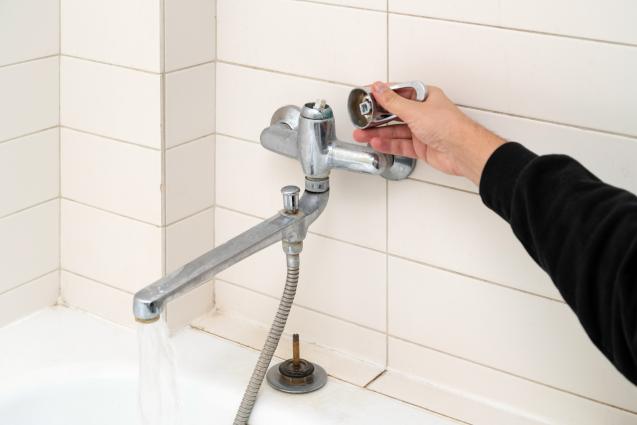
Your Ultimate Guide to Energy-Saving Lighting Solutions
This comprehensive guide delves into the profound recesses of energy-saving lighting solutions, elucidating their benefits, different types, and how best to incorporate them into your spaces. In spotlighting these essentials, we hope to propel readers towards better, greener, and more financially sage decisions about lighting their homes and workplaces.
Understanding Energy Efficiency in Lighting Solutions
The cornerstone of energy efficiency in lighting solutions rests in the primary objective of achieving similar or greater light output from a fixture whilst consuming considerably less energy when compared with traditional lighting systems. These contemporary, energy-efficient lighting solutions are expertly crafted to produce minimal waste heat, which translates to significant savings on cooling expenses, particularly pertinent during the sweltering Australian summers.
Furthermore, they enjoy a markedly longer lifespan compared to conventional lighting options, conferring cost-saving benefits in terms of replacement and maintenance. It's worth mentioning that adopting technologies such as compact fluorescent lamps (CFLs) and light-emitting diodes (LEDs), has the potential to save up to 80% of energy in comparison to less efficient traditional bulbs. The magnitude of such cost savings illuminates the wisdom of investing in energy-saving lighting solutions for the financially astute consumer.
Advantages of Energy-Saving Lighting Solutions
Apart from the more obvious monetary savings, energy-saving lighting solutions carry an array of additional benefits - not least of which is their considerably lower impact on the environment. This arises from their lower energy consumption, which in turn results in reduced greenhouse gas emissions - a compelling incentive in this environmentally conscious age.
In the realm of financial savings, LEDs reportedly cut costs by up to 90%, and CFLs by up to 66%, if used properly. The numbers command attention and underscore the immense cost-saving potential of these energy-efficient lighting technologies.
Additionally, numerous governmental initiatives across Australia offer appealing incentives, rebates, or subsidies to consumers who display a preference for energy-saving lights over conventional illumination options. Besides these perks, there's yet another compelling reason to consider this transition: the potential enhancement of property value. Given the increasing demand for energy-efficient homes, installing such lighting solutions could well present a significant boost to your property's appeal in a competitive real estate market.
Popular Types of Energy-Saving Lighting
Diving into the rich pool of energy-saving lighting options, several stand out due to their innovative design, stellar performance and resilience. LEDs, undoubtedly the most lauded of these, are celebrated for the impressive lifespan they boast—up to 25 times longer than their traditional counterparts. Their superb energy efficiency, typically using 25%-80% less energy than traditional bulbs, adds to their allure.
Compact fluorescent lamps (CFLs) are another exceptional energy-efficient lighting technology, consuming up to 70% less energy compared to conventional bulbs while still casting a comparable amount of light. Furthermore, despite their higher initial cost, their extended lifespan helps them pay for themselves in the long run.
Halogen incandescents are notable, too. Although less energy-efficient than CFLs and LEDs, they meet minimum energy-efficiency standards and provide an aesthetic and performance almost identical to traditional incandescent bulbs.
Solar lights, another trailblazer in energy-saving lighting, use energy from the sun, making them an exemplary choice for outdoor illumination. They are incredibly affordable to operate, and their reliance on a green energy source further bolsters their position as a sustainable lighting choice.
How to Implement Energy-Saving Lights in Your Home
The transition to energy-saving lighting need not be a revolutionary upheaval, but rather a measured, systematic process. Begin with frequently used areas such as the kitchen or living room before proceeding to less used spaces.
Additionally, contemporary smart home technology provides innovative ways to maximise these lighting solutions' potential. Integrating smart systems allows you to control lighting brightness, usage, and even colour remotely, affording greater control over your space's energy consumption.
Transitioning to energy-efficient lighting also entails responsibly managing your old lightbulbs. Since some bulbs may contain harmful materials, proper disposal through recycling programs or toxic waste collections is crucial to curbing further environmental damage.
Maintenance and Care for Energy-Saving Lights
The longevity of energy-saving lights is largely contingent upon their proper maintenance. Regular cleaning to remove dust or grime not only augments their output but also extends their lifespan. Any deviations in performance such as flickering or diminishing light should be promptly addressed as they may represent a precursor to total light failure.
Safety considerations should remain paramount in the use of lights, particularly with bulbs like CFLs, which contain trace amounts of mercury. These should be handled with care, especially when replacing or disposing of them.
Conclusion
The discourse around sustainable living has only intensified as we grapple with the environmental crisis confronting our planet. As we move forward, consumers remain at the forefront of instigating change, and adopting energy-saving lights is a significant step in the right direction.
Take a stride towards a brighter, sustainable future by getting a tailor-made lighting solution. Let the switch to energy-saving lighting solutions illuminate your path towards a more environmentally responsible lifestyle, whilst concurrently shrinking your energy bills and contributing to the preservation of our precious planet earth.



